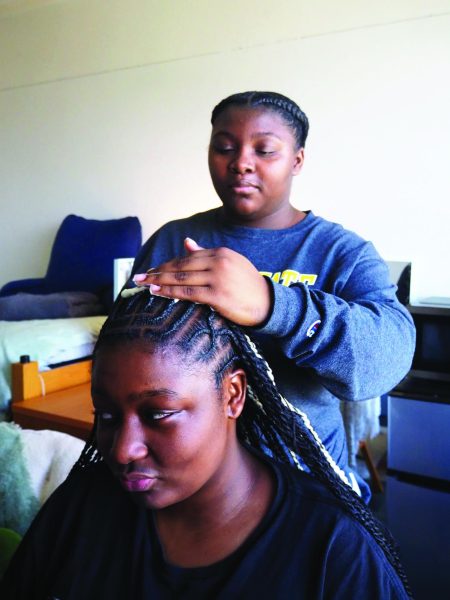Binge drinking numbers down
Anonymous survey reveals WSC students are drinking less but smoking more marijuana
October 8, 2014
After years of intervention education tools, surveys and counseling, the results are in. Wayne State students are doing less binge drinking but smoking more marijuana.
Every spring, Kathy Mohlfeld, licensed counselor and academic advisor, visits classrooms and distributes The Core Alcohol and Drug Survey to more than 600 students. It is an anonymous survey WSC students have been taking since 1995. The information is used to study the substance use trends of Wayne State students.
This survey asks students about their average alcohol and drug use. This information is funded by the Nebraska Office of Highway Safety, collected by Wayne State and sent off to the Southern Illinois University for the data to be organized.
Then Dr. Duane F. Shell at the University of Nebraska at Lincoln studies the data, determines what the results mean and reports the trends back to the counseling center, as well as the TRUST coalition (Toward Responsible Use of Substances Today).
The TRUST coalition is a group made up of students, faculty, campus security, resident assistants and Wayne police officers, who meet on a monthly basis to discuss ways to reduce the problems of alcohol and drug use by students.
“It’s a group effort to help students become more successful,” Mohlfeld said. “We do different things to help different groups of students.”
One product of the TRUST coalition was the Safe-Ride Program, Wildcat Wheels, a student-led initiative. Other efforts from the counseling center are intervention education tools such as the Alcohol E-checkup To Go.
The Core Alcohol and Drug Survey indicates that these efforts have been effective. The highest recorded percentage of binge drinking (five or more drinks in one single setting) was in 2000 at 64 percent. 2013 marked the first time since the early 1990s that binge drinking was just a shade below 50 percent.
In the spring of 2014, binge drinking was down to 44 percent.
“We’re teaching students [that] moderation is the idea here. People question the statistics because all they see are the people who are drinking—not the ones who are not,” Mohlfeld said.
Still, the results speak for themselves. The percentage of students who report they’ve never drunk before reached an all-time high in 2014 at 15 percent. The percentage of men reporting having 10 or more drinks reached an all-time low of 29 percent in 2014 and the percentage of women reporting never drinking reached an all-time high of 44 percent in 2014.
“Drinking and driving is where we’ve had the best impact,” Mohlfeld said.
From its peak of almost 60 percent in 2002, students reporting drinking and driving has dropped to less than half of the 2002 figure. Fewer than 30 percent of students now report drinking and driving.
Mohlfeld credits this to the safe-ride program which started in February 2005. It took two years, but it was 2007 when the trends indicate a decline in drinking and driving.
All the alcohol data may be trending down, but marijuana usage is on the rise. While only 25 percent of students report using marijuana in the last year, 14 percent reported marijuana usage in the last month, which is up from 8 percent.
“I see that going up. We have a marijuana e-checkup now asking how marijuana is going to help you get to your goals,” Mohlfeld said.
Overall, this year’s survey results are positive.
“It is notable that the downward trend in drinking and driving has been larger than those for drinking measures. Wayne State students appear to be drinking more responsibly, leading to meaningfully reduced risk,” Shell said.








